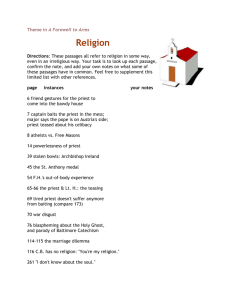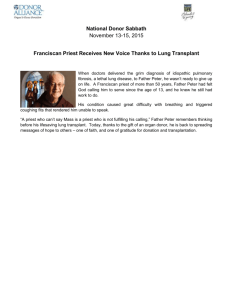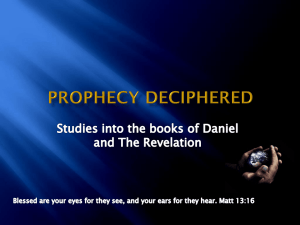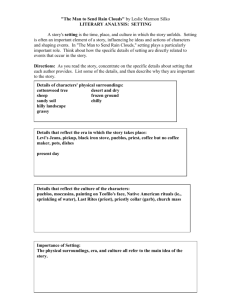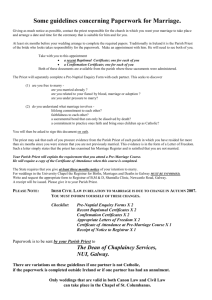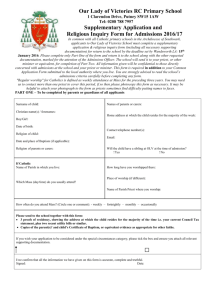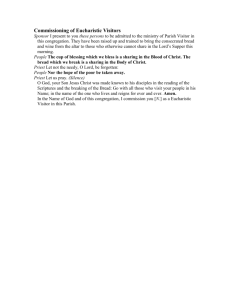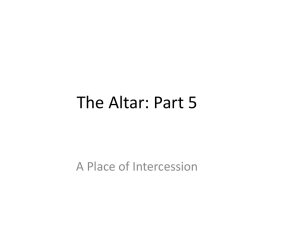The medieval Church
advertisement
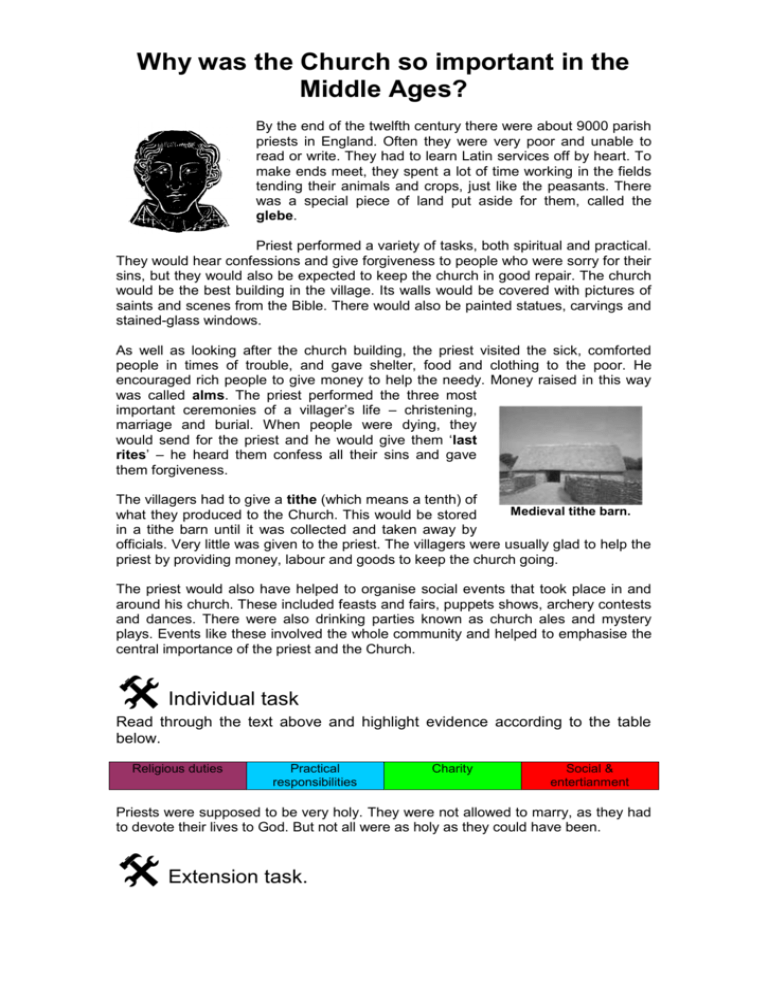
Why was the Church so important in the Middle Ages? By the end of the twelfth century there were about 9000 parish priests in England. Often they were very poor and unable to read or write. They had to learn Latin services off by heart. To make ends meet, they spent a lot of time working in the fields tending their animals and crops, just like the peasants. There was a special piece of land put aside for them, called the glebe. Priest performed a variety of tasks, both spiritual and practical. They would hear confessions and give forgiveness to people who were sorry for their sins, but they would also be expected to keep the church in good repair. The church would be the best building in the village. Its walls would be covered with pictures of saints and scenes from the Bible. There would also be painted statues, carvings and stained-glass windows. As well as looking after the church building, the priest visited the sick, comforted people in times of trouble, and gave shelter, food and clothing to the poor. He encouraged rich people to give money to help the needy. Money raised in this way was called alms. The priest performed the three most important ceremonies of a villager’s life – christening, marriage and burial. When people were dying, they would send for the priest and he would give them ‘last rites’ – he heard them confess all their sins and gave them forgiveness. The villagers had to give a tithe (which means a tenth) of Medieval tithe barn. what they produced to the Church. This would be stored in a tithe barn until it was collected and taken away by officials. Very little was given to the priest. The villagers were usually glad to help the priest by providing money, labour and goods to keep the church going. The priest would also have helped to organise social events that took place in and around his church. These included feasts and fairs, puppets shows, archery contests and dances. There were also drinking parties known as church ales and mystery plays. Events like these involved the whole community and helped to emphasise the central importance of the priest and the Church. Individual task Read through the text above and highlight evidence according to the table below. Religious duties Practical responsibilities Charity Social & entertianment Priests were supposed to be very holy. They were not allowed to marry, as they had to devote their lives to God. But not all were as holy as they could have been. Extension task. Read through the source below. Is the man a good or bad example of a priest? Why? “They say the priest puts his horses and sheep to pasture in the churchyard. They say the priest was away for six weeks and made no arrangements for a substitute. He spends his time in taverns, and there his tongue is loosed to the great scandal of everyone. They even say he is living with a woman, Margaret, and spends more time with her than looking after his parishioner’s souls.” From the records of the Bishop of Hereford, 1397. Evidence from villagers’ statements about their parish priest.
